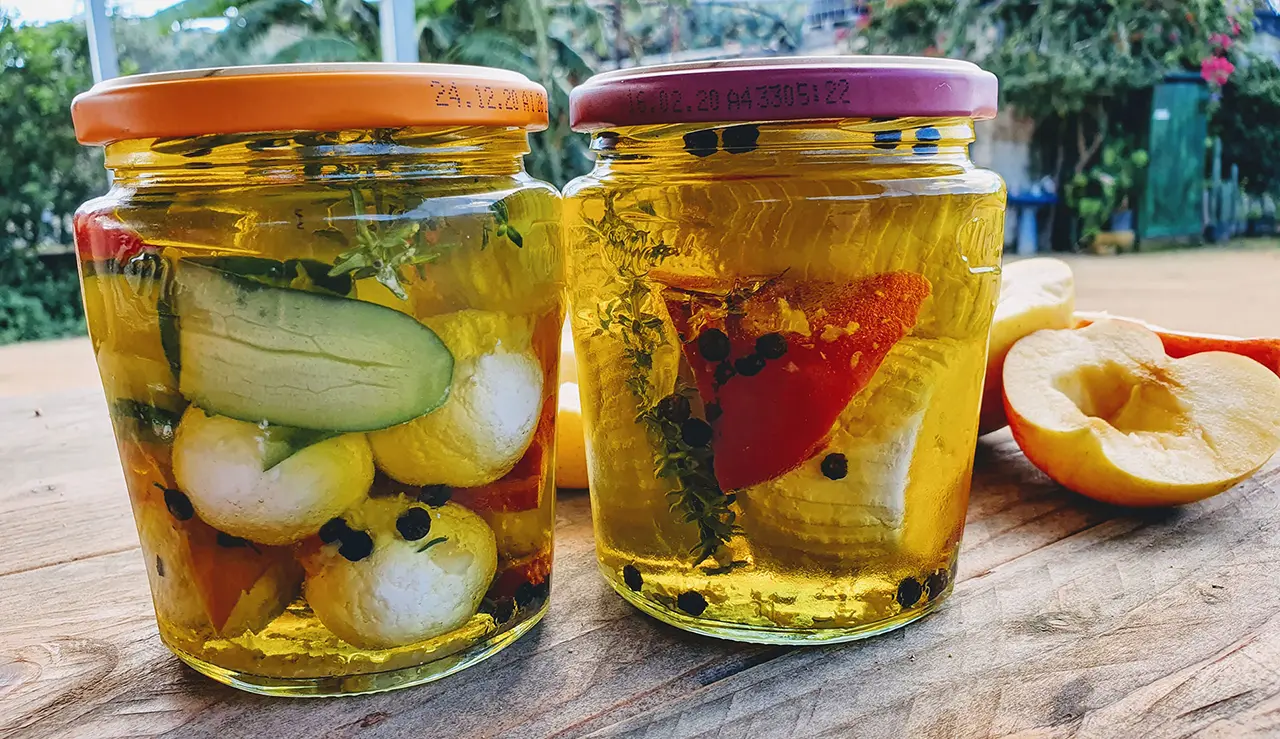
One of the Mediterranean's oldest food collaborators, Bacillus bulgaricus, transformed milk into a stable, tradable commodity, saving it from spoilage in a region without refrigeration. Originating in Bulgaria, this bacterium became a vital preservation engine throughout the Mediterranean, contributing to dishes like labneh in Greece and kishk in Lebanon, turning perishability into permanence through fermentation.
It doesn’t look like much under a microscope—just a rod-shaped bacterium, quietly reproducing in a petri dish or a warm vat of milk. But Bacillus bulgaricus, for all its microscopic modesty, is one of the Mediterranean’s oldest and most successful collaborators.
Long before fermentation became fashionable—before “gut health” trended or probiotics filled supermarket shelves—this bacterium was already at work. Not in laboratories, but in clay pots. On mountain farms. In kitchens where preservation wasn’t a health choice—it was the line between waste and survival.
If olives, wheat, and grapes are the Mediterranean’s trinity of abundance, then Bacillus bulgaricus is its quiet fourth member: invisible, essential, and endlessly adaptable.
In a region defined by heat and scarcity, milk posed a particular challenge. It was nourishing, yes—but also volatile. Spoilable. Dangerous if left unchecked. And refrigeration? A 20th-century luxury.
The Mediterranean answer was simple but brilliant: introduce life to prevent decay.
Rather than sterilising milk into passivity, they introduced Bacillus bulgaricus—a naturally occurring bacterium that would dominate the microbial landscape, acidify its environment, and fend off spoilage. In doing so, it turned something fragile into something stable. Edible. Transportable. Even tradable.
Preservation didn’t mean stopping time. It meant changing the rules of it.
Bacillus bulgaricus earned its name in the Balkan highlands, where cool mountain air met raw milk and instinct. Shepherds stored fresh milk in animal skins or ceramic jars, and something happened—something they may not have understood scientifically, but trusted culturally.
The milk thickened. It soured. It stabilised.
They called it kiselo mlyako—sour milk—but what they’d cultivated was a microbial masterpiece: a preservation engine that turned milk from perishability into permanence.
It wasn’t just food. It was health. Strength. A staple packed into soldiers’ provisions, loaded onto carts, buried in cellars. In the absence of refrigeration, Bacillus bulgaricus became a refrigeration strategy of its own.
Travel south and east, and the influence of Bacillus bulgaricus deepens—not just in yoghurt, but in systems of preservation built around it.
In Greece, fresh yoghurt was strained into labneh, then rolled into balls and submerged in oil. In Lebanon and Syria, it was mixed with cracked wheat, fermented further, then dried into kishk—hard discs that could last for seasons, even years.
Here, Bacillus bulgaricus became more than a bacterium. It became infrastructure. A method of storing not just milk, but calories, nutrients, and even cultural memory.
This wasn’t refrigeration. It was transformation as preservation—the idea that food survives longer when it’s allowed to evolve.
And in the background, always: one bacterium quietly doing the heavy lifting.
In Turkey, the bacterial story diversified again.
Fermented milk was turned into ayran, a salted drink with a longer shelf life than fresh milk. But more telling was tarhana: yoghurt mixed with grains and vegetables, left to ferment, then sun-dried into a preserved powder. It was soup, yes—but it was also strategy. A microbial meal kit centuries before modern packaging.
North Africa’s raib and Berber preservation techniques followed similar principles. Ferment, dry, store. Yoghurt wasn’t the final product—it was a stage in a microbial relay, extending the life of food across time and distance.
Each time, Bacillus bulgaricus delivered the same outcome: stability without sterility.
What ties these examples together isn’t cuisine—it’s logic.
Wherever survival required it, Bacillus bulgaricus was recruited. Not imported. Not invented. Just cultivated from the environment—a symbiosis between bacteria and humans that shaped everything from flavour to food security.
And in doing so, the bacterium quietly encoded resilience into the food systems of the Mediterranean. It gave milk a second life. It gave people more time. It turned microbial activity into a form of cultural memory.
You could call it fermentation. You could call it preservation. But really, it’s time management at the microbial level.
Today, most yoghurt comes in sterile plastic tubs. It’s manufactured under fluorescent lights, shipped cold, stored colder. Preservation is no longer the goal—packaging is.
Bacillus bulgaricus still plays a role, but a marginalised one—its work tightly regulated, standardised, and divorced from the environmental conditions that once gave it meaning.
But in rural kitchens and among small producers, the old logic still lingers.
These are not just products. They are time-tested collaborations between humans and microbes. Bacillus bulgaricus still does what it’s always done—preserve, transform, adapt. It’s just waiting for us to remember what it’s for.
Unlike pickling or freezing, Bacillus bulgaricus doesn’t stop decay by halting life. It does the opposite: it introduces life to create balance. It doesn’t sterilise food; it steers it.
And that’s the genius of Mediterranean preservation—not to resist change, but to coax it into something useful.
So the next time you eat yoghurt, or soup made from a sun-dried powder, or even labneh scooped from oil, remember: you’re tasting more than a food. You’re engaging with a living system, older than writing, smarter than packaging, and more sustainable than refrigeration.
And somewhere in that system, a rod-shaped bacterium is still at work, turning fragility into strength, and perishability into permanence.

At Med.kitchen, our passion lies in crafting exceptional culinary experiences through our online platform. We specialise in sharing a wealth of knowledge via articles, recipes, courses, and online mentoring, aiming to inspire both novice and seasoned chefs alike. Our focus has shifted from private dining to being an online source of gastronomic inspiration, allowing you to explore and refine your culinary skills from the comfort of your home..